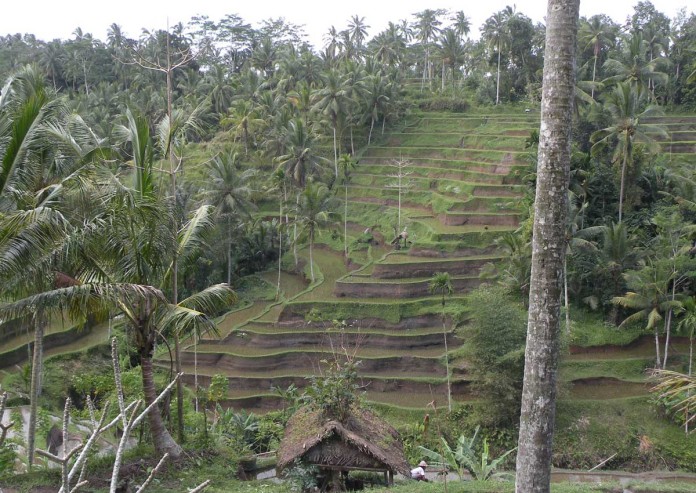NUSA DUA – Tourist taxi driver Nur-ul Aslam watches in hopeful silence as drops of rain begin to cloud his windscreen.
Last year at this time he was farming rice on his two-hectare farm 40 kilometres northeast of Bali’s airport. But a long spell of dry weather, which has lasted since last July, dried up irrigation channels in his village of Tegal Mengkeb.
To survive, the 33-year-old walked away from his farm last December and began driving a taxi in Nusa Dua, a tourist hub with dozens of luxury resorts. He dreams of returning home.
“We need regular good showers, but there is mostly drizzle. Unless the subaks (water channels) are full again, I can’t plant any crop,” he said.
Aslam may have found a way to stay on the farm next year, however. He recently signed up for new government-backed crop insurance, one of 100 farmers to do so in Bali, where rice is grown on about 80,000 hectares of land.
The Bali insurance program, launched last October, promises to pay farmers up to six million rupiah (S$625) for a crop failure caused by disasters such as drought, flooding or pest attacks.
The premium is 180,000 rupiah per hectare, but the state has agreed to pay 80 percent of the cost. That means a farmer like Aslam only has to come up with 36,000 rupiah, or about US$2, per hectare.
The programme is part of a larger Indonesian crop insurance scheme introduced in 2012-2013 with financial support from the Japan International Cooperation Agency (JICA).
In the first season of the programme, 470 hectares of rice fields were insured in East Java and Sumatra. This year, the government has moved to include Bali and a few other provinces, though delays in the expansion have limited the number of farmers signed up.
“Our previous target this year was 11,000 hectares of rice fields (insured), but only 4,000 hectares can be insured due to limited time,” said Ida Bagus Wisnuardhana, head of the Bali provincial Agriculture and Foodstuffs Affairs office.
Currently, the scheme targets only small-scale farmers growing rice, but the federal government hopes to bring in all 27 million farmers in Indonesia’s 33 provinces by 2019, according to a paper published by Japan’s Ministry of the Environment.
EL NINO AND DROUGHT
In Indonesia, the dry season runs from May to August. But Badan Meteorologi, Klimatologi dan Geofisika (BKMG) – the local official weather mapping organisation – says the island of Bali has seen “extreme” weather since the end of August.
The agency attributes the unusually hot weather to the El Nino phenomenon.
In November, the temperature in the area around Denpasar, Bali’s provincial capital, rose as high as 37 degrees Celsius above the average daily temperature of 31.4 degrees Celsius, said Nyoman Gede Wiryajaya of BKMG.
Bali’s provincial agricultural department says nearly a thousand hectares of farmland are suffering some degree of drought, which threatens the coming harvest. With crops drying, local media have already reported food shortages in several villages.
Buleleng, a north Bali district which has recorded crop failure on 160 hectares, has been declared under “severe drought”.
With no rice available, “we have been living off dried cassava for several weeks,” said Palembang Kaka, a small-scale farmer from Buleleng who now works as a porter in Pasar Badung, Denpasar’s largest community market.
Although globally El Nino is expected to start weakening soon, meteorological service officials in Bali are advising farmers to brace for more dry weather.
Sutopo Purwo Nugroho, of the National Disaster Management Agency, predicted that “rainfall will be extremely low until the end of this year”.
For Aslam, the prediction could mean another missed crop and another season at the wheel – unless his new insurance policy works. “We will see how the insurance (money) is paid. I hope it is enough to recover my losses,” he said.






